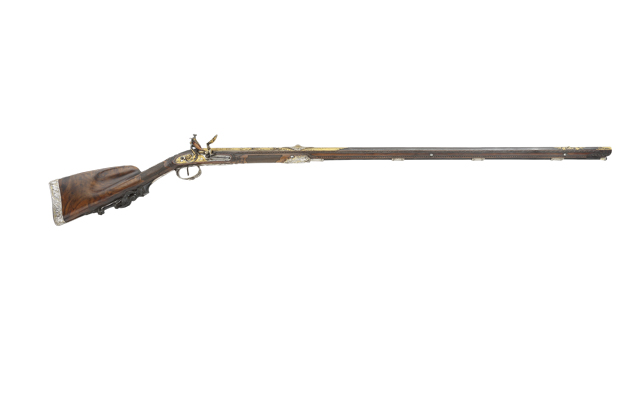The Boutet gun is a particularly special example from the cache of 11 magnificent weapons given by Napoleon to Carlos IV of Spain in 1802, says Edward Impey.
The Boutet gun was rather special, and one of 11 guns given by Napoleon to Carlos IV of Spain. Edward Impey, director general and master at the Royal Armouries Museum, Leeds explains its significance in another installment of our historical hunting weapons series.
BOUTET GUN
In 1802 The King of Spain, Carlos IV, received a wonderful gift from his ally Napoleon to cement the third Treaty of San Ildefonso. The deal returned Louisiana to France and gave Carlos Tuscany. But, crazy about shooting, it was the gift of 11 magnificent guns that he prized the most. This Boutet gun, acquired by the Royal Armouries in 1942, is one of them.
The maker was Nicolas-Noël Boutet (1761-1833), one of the greatest gunsmiths of all time. He was a consummate survivor who worked for successive royal, republican and imperial governments. In 1793 Boutet’s atelier, later the Manufacture Nationale d’armes à Versailles, was established in the outbuildings of the former royal palace.
Most of its output was for the military. But Boutet’s speciality was fabulous armes de luxe. His official brief was “to surpass everything else ever made and reach a level of perfection that foreign countries will despair of”. His success lay partly in his dual role as director and chief designer. It earned him the unique title of Directeur artiste, as engraved on the lockplate of this example.
Carlos’s gift consisted of:
- two rifles (carabines) of different and complex forms
- two pistolets de combat
- a fusil double (double-barrelled fowling piece)
- six fusils simples (single-barrelled smoothbores)
The importance attached to these instruments of diplomacy is shown by their staggering cost of 130,000 francs (about £5,000,000 today).
The Armouries’ Boutet gun is one of the fusils simples, of 16mm or 18-bore, 136cm long and weighing 5lb 12oz – a light, delicate and exquisite object. The decoration of the Boutet gun is largely in the obsessively classical Directoire style. Its subject matter chosen to match the status of the recipient and the object’s purpose.
Details include a relief figure (silver on a gold background) of the goddess Diana, with hound, bow and quiver on the finial. Also a boar-hunt in Graeco-Roman style on the left lockplate and a Medusa head and trophy of the Liberal Arts on the trigger guard and a trophy of Roman arms on the butt plate. A golden fox on the lock plate attacks a golden hound. The contemporary mania for all things Egyptian left its mark in the three-dimensional ebony caryatid on the underside of the grip. The recipient is personally acknowledged by the escutcheon plate bearing a crowned “C” and his portrait, framed by attributes of royalty, at the ramrod socket.
Whether Carlos ever used this gun is unknown. But we can imagine him walking-up his quarry, accompanied by his bearers and loaders, revelling in the style and splendour of his fabulous present.






